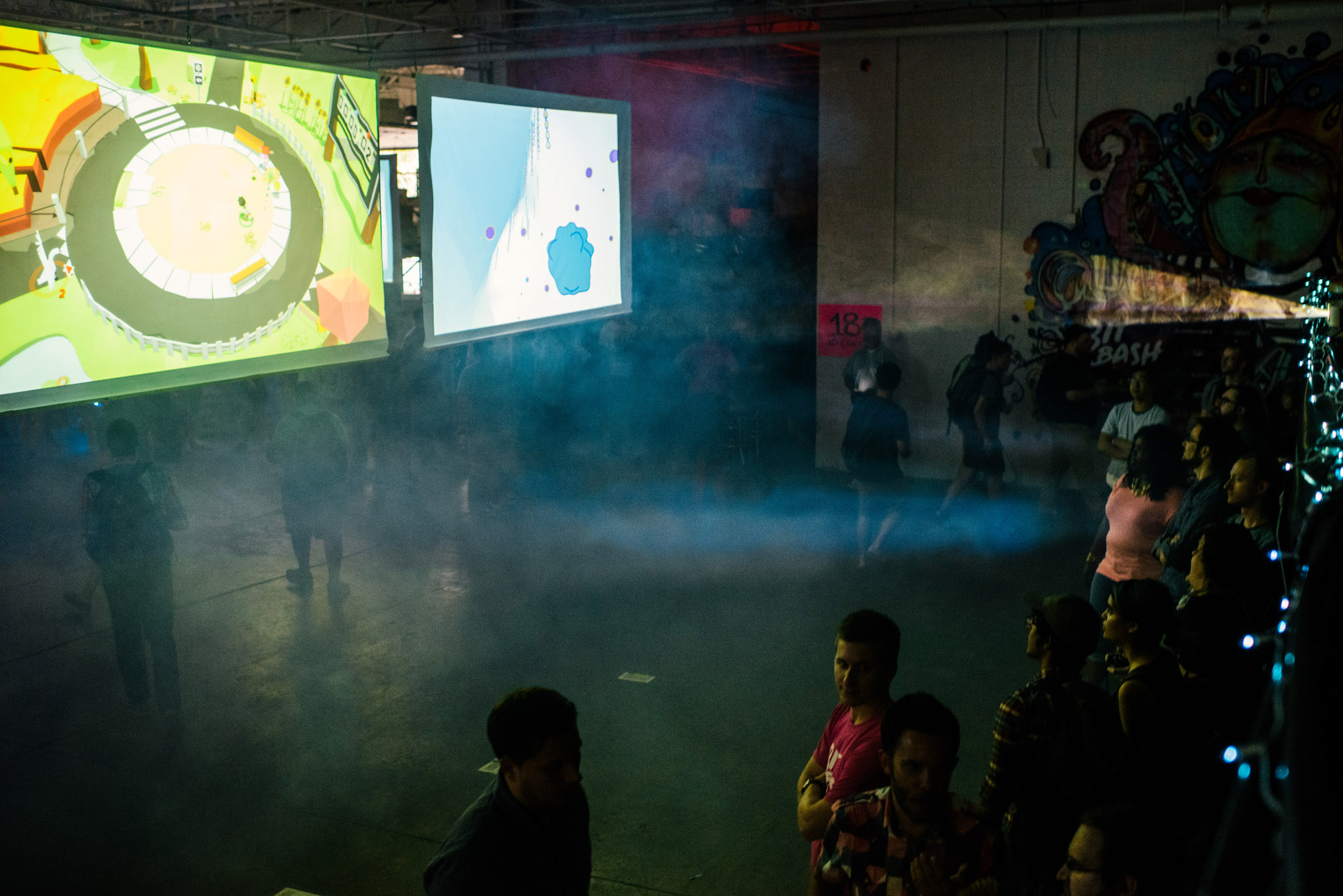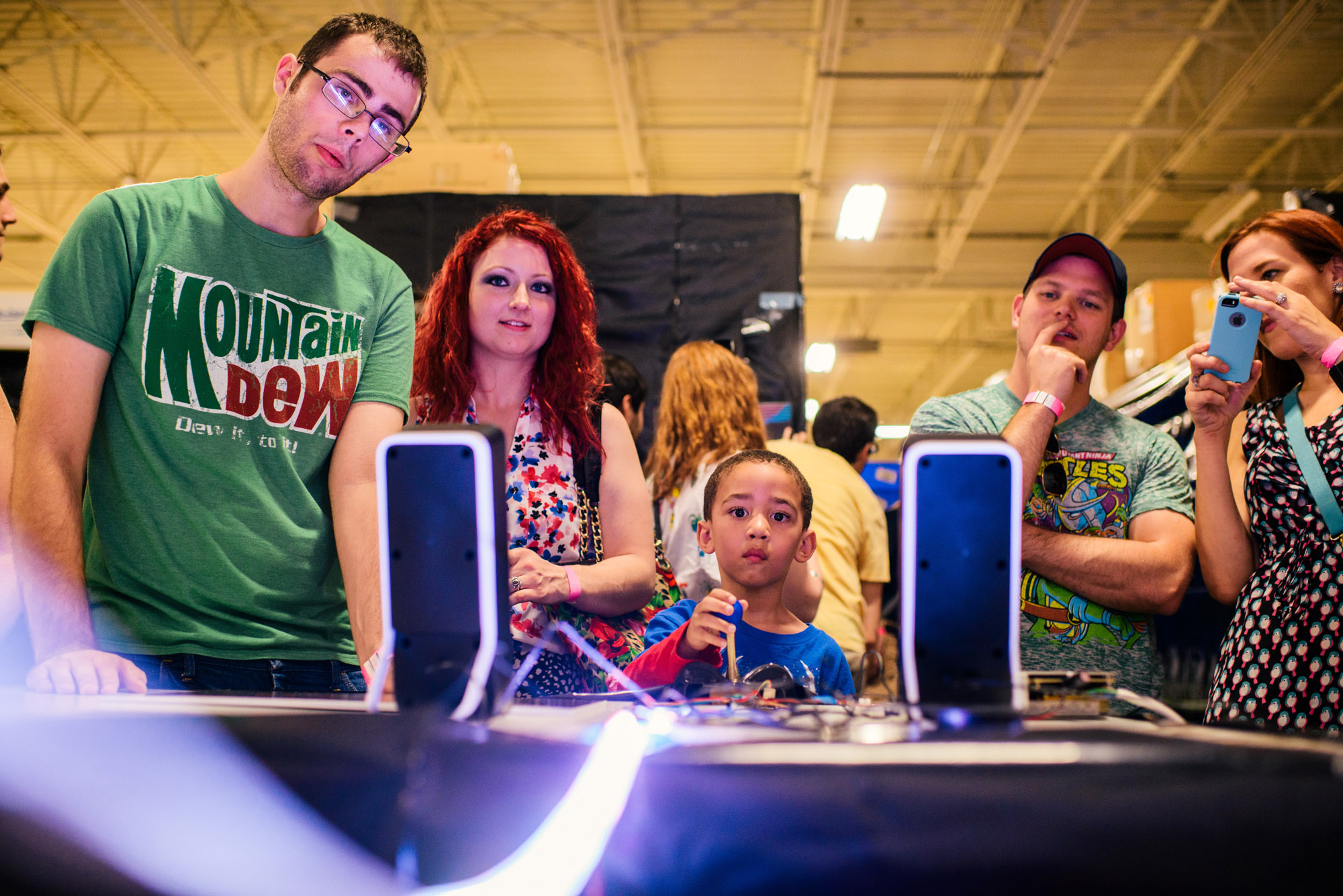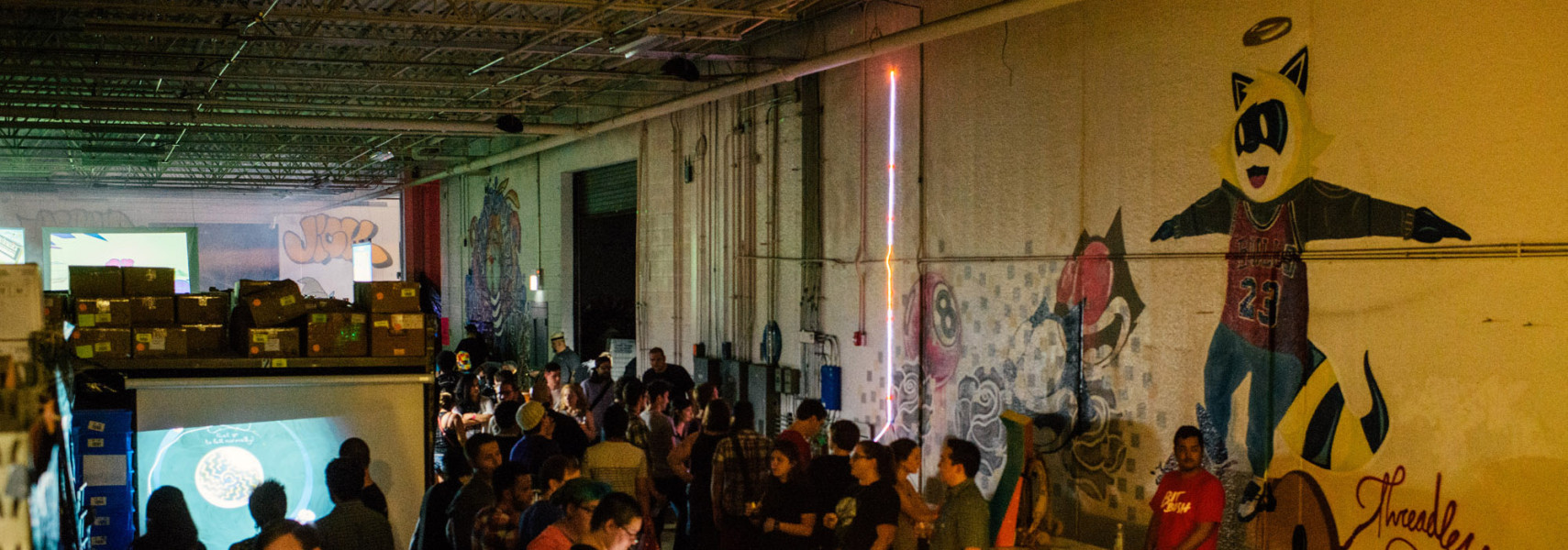All photos by Brent Knepper
///
Figuring out the optimal, most appropriate way to install a piece of sound art in a gallery can be a tricky proposition. Will the volume of the audio invade the experiences of the other artworks in the space? Is the nature of the piece fitting for headphone listening? Is there a sculptural or installation component that dictates a certain way of hearing the audio? The white cube gallery’s default soundscape is as bare and neutral as its walls—an audibly empty space that doubles as a quiet zone for reflection on equally silent paintings and sculptures. The lack of multisensory stimulation can make for a more potent intellectual thought space. How will the sound art piece complement or upset that ambiance?

Now imagine you have to install that same sound artwork in a videogame arcade where the power dynamic between singular work and space is totally reversed. A sound piece in an arcade must struggle for relevancy and attention, not to mention merely being heard amongst the cacophony of lasers, chiptune explosions, and clinking tokens. This is why Dance Dance Revolution machines have huge, neon emblazoned speakers aimed directly at their players—to ensure the beat is preserved at least as far as the dance platforms extend. When it comes to sound design in arcades, offense is the best defense
With that in mind, it’s interesting to consider the curation and installation of games with regard to sound design at the second (annual?) Bit Bash, a Chicago-based indie videogame festival that took place last week at t-shirt company Threadless’ headquarters. In part a reaction to the declining arcade scene in the United States, many smaller-scale videogame showcases like Bit Bash have popped into existence and begun to fill the void. These events act both as marketing platforms for new and upcoming games and as block parties that facilitate public play and unique social gaming experiences. However, the range of games at Bit Bash was far more diverse in style and sometimes form than an old-school arcade, and the curation of the physical space demonstrated great tact in using sound to unify certain rooms and isolate others.
One of the largest spaces at Bit Bash was in a warehouse section of the Threadless facility. In addition to a smattering of games projected onto sheets suspended from the ceiling, the cavernous room also housed a stage where DJs spun dance tunes throughout the night. Although the games in this space had their own little external speakers, the house and electro pop booming from the stage assumed each game’s soundtrack save a few levels-peaking sound effects here and there. By overlaying the space with music, each game’s embedded audio may have been replaced, but it also afforded a consistent, party-centric tone that blended play sessions into as a more holistic festival experience rather than pockets of individual gaming instances. None of the warehouse games required in-game audio to play, anyway; though who’s to say, given the proper circumstances, that a game’s original sound design couldn’t have a significant impact on its core functionality, particularly in the atmospheric, first-person exploration titles like Shape of the World and Gardenarium.
If you left the warehouse and headed to the “quiet fun” tabletop games room, you’d find an interstitial space with crowds of attendees and volunteers chatting while moving between the festival sectors. Huddled in one corner of that space sat a flatscreen and a pair of ear-covering headphones for playing the music generator/puzzle game Sentris. While you might normally want to wear headphones for playing Sentris to best monitor your loop compositions, at Bit Bash the headgear pulled double duty as noise cancelling earmuffs as well. Sentris is, in essence, a step sequencer, but with a few Tetris-like block-stacking elements to direct your instrumentation. Unlike Tetris, though, you can’t really “lose”—at worst you just produce some weak beats. An intricate music creation game like Sentris feels as if it would get trampled in an arcade setting, but its inclusion at Bit Bash speaks to an evolution in public videogame spaces that not only abandon quarter-grubbing business models but also embrace and find room for non-competitive kinds of play.

The most extreme example of a game with its own unique space at Bit Bash was undeniably Thumper. Situated in a sweaty Airstream trailer in the parking lot, the rhythm action game snarled and clanged like a wild beast tied to a tree in the yard, away from the better-behaved animals. In Thumper you control a beetle careening down a warped version of Rock Band’s “highway,” hopping and turning as the path demands, only instead of reciting “Yellow Submarine” you’re merely surviving what feels like an abstract take on Paula Temple’s “Deathvox” with more metal scraping noises. Bit Bash’s decision to isolate Thumper both allowed players the intense concentration needed to execute the tight rhythmic timing the game requires, and prevented it from overshadowing less sonically intense fare like Home Improvisation, the hilariously cumbersome Ikea furniture assembly simulator. And given the dedicated space, Thumper thrived, mostly because in addition to coming off as a very promising game, the sound design, which so heavily impacts every aspect of the experience, was prioritized through its installation.
One of the most auspicious aspects of Bit Bash is that the festival catered to a variety of gaming interests without having to go the “white cube” route of homogenized presentation. In fact, the noisy party atmosphere at least provided an entertaining backdrop while I waited in some admittedly arduous queues. Sure Bit Bash doesn’t offer the intellectual headspace that the cones of silence around art galleries instill, but the overall tone and tenor of the festival does feel more like a natural habitat for games, especially those that hearken back to the golden era of arcades. And while I still don’t think an arcade is a great place to install most sound art, at least at a show like Bit Bash, the prospect is much more viable than it used to be.
